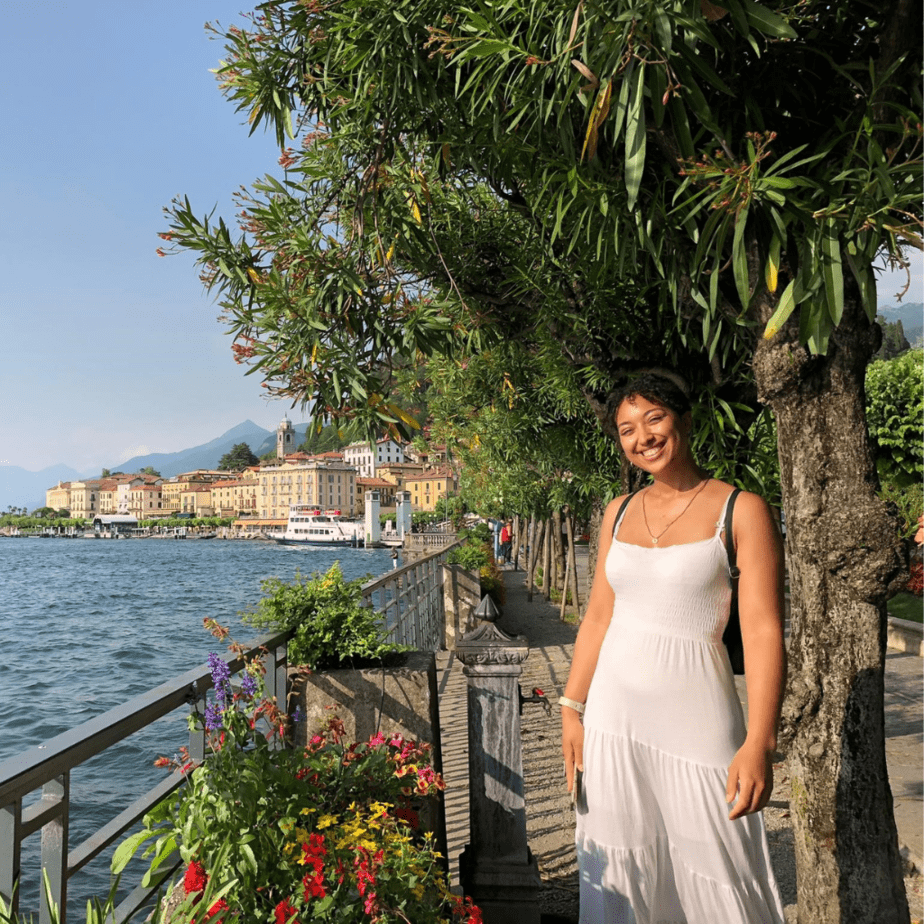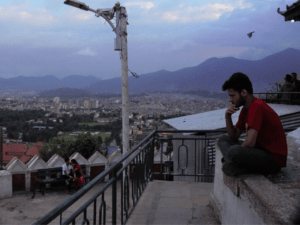Recordings of the renewed podcast episode on The Fountain (part 2) coming out soon. Meanwhile, find the new version written below.
Last month, I discussed ‘The Fountain’: A book on family constructs written by Els van Steijn. I explained what the fountain represents and why some people ascend in the fountain. Also, I discussed the importance of receiving what your parents can give to you. The balance between giving and receiving is different with our parents and with other types of relationships. For this reason, I focus this article on explaining the balance between giving and receiving in other types of relationships. Also, I discuss how you could change your role in a relationship if you feel like you give more than you are able to give.
The relationship with our parents
As you might remember, Els says that every relationship should be in balance. In practice, this means that in a relationship, you are able to both give and receive to a similar extent as the person you have a relationship with. Els says there is an exception for the relationship between a parent and child and between a teacher and student. Your parent or teacher is always able to give you much more than you are able to give them in return. However, this imbalance will not harm your relationship with your parent or teacher. It is unrealistic to expect from yourself that you can return as much as they gave you. Instead, you pay forward what you can give. That is how you balance the scale.
For other types of relationships, there should be a balance between what you give and what you receive. Important here is to remember that when you ascend in the fountain, finding this balance might be more challenging.
Giving and receiving
How we give
I think it’s much easier to understand why giving is important in a relationship with someone else. All love languages are shown through giving, and love languages are not only shown to our spouse but to everyone we care about. We give through words of affirmation, acts of service, spending quality time, physical touch, and gifts.
Els van Steijn explains that it is often easy to give because you never feel like you owe anyone anything. In general, as Els states in her book ‘The Fountain’, to be willing to give is also considered very honorable. The value of knowing how to receive, however, is underrated because knowing how to receive doesn’t come easy to everyone.
How we receive
When you receive, you are – as Els calls it – making yourself guilty. This means that it feels like you owe the giver something. For instance, many of us probably experienced a situation in which someone buys us food, and we respond with ‘Thank you, next time it’s my treat.’ This is the feeling of guilt in action. We acknowledge we received something by showing appreciation and sometimes even promise to pay next time, showing that we value a balanced relationship. In practice, this is also a coping mechanism for guilt.
A relationship could be challenging if you and the other person haven’t found a balance in how much you give and receive. When you are offered much more than you are able to give in return, there is a high probability that this makes you feel uncomfortable. This could drive you and the other person apart. You don’t want to feel guilty all the time about receiving so much but at the same time are not able to give them more of what you think they need in return. If this is the case, go through the five love languages. Next, try to discover from which love language you could give something in return.
Eventually, what you give or receive doesn’t necessarily have to take on the same shape as what the other person gave you or received from you. Sometimes a genuine ‘thank you’ is enough as long as the other person is willing to genuinely accept it instead of saying something like ‘it was nothing’. Genuine acceptance here is important because otherwise, the guilt is more likely to remain. You could also give through, for example, a listening ear, attention, or effort. Also, you could share how you feel with the other person. It might be that the other person names things that they feel appreciative of, that you otherwise wouldn’t have noticed about yourself.
How we balance the scale
According to Els van Steijn, it is natural to strive for balance in a relationship. If you either receive more than you can give or give more than you receive, your relationship is probably less sustainable than when there is a healthy balance. This is because, if you are not able to both give and receive, you aren’t able to truly connect with the other person. The inability to give makes you feel guilty and the inability to receive leaves someone else with their feeling of guilt. A relationship is only sustainable when you are able to both give and receive.
A healthy close relationship is full of transactions. The other person gives, and you receive. You feel guilty and give more in return. The other person feels guilty and gives even more. According to Els, that is how a relationship comes to flourish. This is one of the ways to create trust.
In other words, when you have someone close to you who gives a lot, rather than rejecting what they have to give because it makes you feel uncomfortable, receive what they would like to offer you and take some time to think about what you could give in return. You may not be able to send a gift at every birthday. However, you can perhaps make a call to that person every now and then just to check how they are doing.
Most important is to be aware of how important a balanced relationship is and to find this balance in a way that is feasible for you. But that is not really a surprise. Isn’t awareness the key to everything?
The caregiver
When you ascend in The Fountain, you may notice at some point that you give more than you are able to give. Consequently, at some point, you may feel drained. However, at the same time, you find it difficult to say no to other people because you don’t like to step on anyone’s toes and prefer to avoid conflict.
When you are afraid of stepping on other people’s toes, you take responsibility for other people’s lives. You feel primarily responsible for taking care of other people’s needs and feelings and, by that, put yourself second. At the same time, you give other people the responsibility for your life because you avoid confrontations. In other words, you need other people to figure out what you need and to focus on how to meet your needs.
According to Els, and I agree with her, people should take responsibility for their own lives. She says that not standing up for yourself is standing in the way of growing up.
How to balance the scale as a caregiver
A caregiver can change his/her role if it feels like it’s draining. In that case, you would need to remind yourself that it’s OK to say no sometimes. It is also OK to do something for someone else as long as you consciously make that decision and are not doing it because you are afraid of how someone else might feel if you don’t.
When you say no, unfortunately, it is realistic to say that you could hurt the other person’s feelings even when you try to be as compassionate as possible. As a result, this other person might get upset with you. This is exactly why many of us avoid conflict. Because it makes us feel bad, and we don’t know how to deal with that feeling. Els thinks it is inevitable to find ourselves in situations in which we feel bad. It’s part of adulthood, and as soon as we acknowledge that, we can learn how to deal with that feeling instead of avoiding it.
I think the best way to deal with this feeling is by reminding ourselves that we are all responsible for our own feelings and for how we deal with those feelings. We could impossibly carry full responsibility for other people’s feelings. That would mean it would depend on us how they will feel. But if someone doesn’t want to change the way he or she feels, they won’t. No matter how hard you try. People can only manage their own feelings.
Moving forward
When you are able to both give and receive, you become more grounded and rooted. You start to become able to help others and be there for them without feeling like you carry responsibility for them. You have insight into what you can give. You can’t give from an empty bucket. Therefore, you need to be able to set boundaries as soon as you start to see you are running out of water. It’s your responsibility to take care of yourself first.
In the previous article, I discussed how the relationship with your parents influences how you deal with responsibilities. When you ascend, you take on responsibilities that aren’t yours. In this article, I spoke about the influence this has on the relationship you have with others. When you take on responsibilities that aren’t yours, you get uncomfortable with the idea of stepping on other people’s toes. However, this is inevitable.
It’s important to stand in your own place in the fountain and to acknowledge your parents to connect with them. From a position of connection with your parents, you are able to take full responsibility for your own life. You are able to make your own decisions based on how you want to live your life. Also, you don’t feel responsible for the life of others. You can set clear boundaries for what you are and are not willing to do without feeling extremely bad. Besides no longer feeling bad for the choices you make, you take full responsibility for the consequences of your actions but also for your inaction. You no longer feel tied to other people. Instead, you feel connected.
What I shared about Els van Steijn’s philosophy is based on her book. However, there is always a chance that I misunderstood some of the things she wrote. Do you want to get the philosophy straight from the source, make sure to read her book: The Fountain: Find you place.
Personal story
‘The Fountain’ explained a lot to me. I learned about a year ago that I took on an unhealthy amount of responsibility for my mom’s happiness and that I needed to set new boundaries to fix this imbalance.
I grew up feeling much more responsible than a child is supposed to feel, and I was pretty independent and autonomous for a kid. Besides feeling responsible for myself, I also felt responsible for my mother’s happiness. The philosophy of the fountain made me realize I would never be able to fill my mother’s bucket. And soon after setting boundaries, I also realized I didn’t need to. For as long as I have known her, my mother has been a very strong and resilient woman. I wasn’t able to see that when I felt responsible for her. My fear didn’t allow me to.
When I read this book, it was like I found a missing piece of the puzzle I had been trying to complete for years. Next to learning about my position in the fountain, I learned about the importance of a healthy balance between giving and receiving. I have been pretty off-balance. But now that I understand myself better and learned more about what a healthy balance is supposed to look like, I can start to improve.
I must say that while writing this article, I felt a lot of discomfort. Writing to me is a way to understand myself better. I think about topics in another kind of way and try to understand where I stand myself. When I wrote this article, I realized my personal challenges. This confrontation reminded me of what I need to change to feel more connected to myself. I think that when you realize you need to work on things, there is nothing else you can do than step into discomfort to overcome what you are struggling with. Turning a blind eye doesn’t really feel like an option because unfortunate patterns repeat themselves until we are able to work on them. Only then they will disappear. Your world lights up, and shadows disappear with the obstacles.









